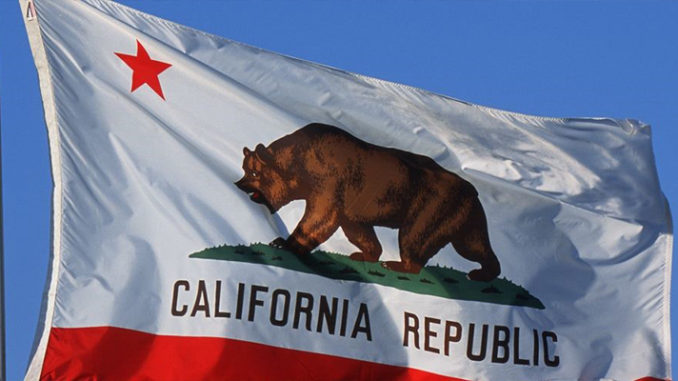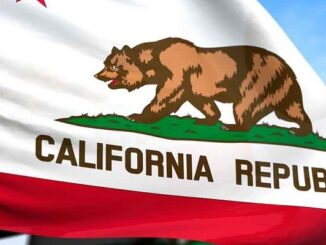
After years of inaction by the US federal government, state governments like California’s have forged ahead with solutions to challenges such as climate change and labor-replacing automation. Indeed, the state is developing its own distinctive political economy.
by ,
Despite multiplying policy challenges, the United States is crippled by political polarization and consumed with rancorous partisan arguments (often on Twitter and without facts). The resulting paralysis at the federal level means that progressive federalism and initiatives by individual states will be the main channels for policymaking in 2020, and likely beyond.
Once again, California, the world’s fifth-largest economy, is leading the way. The state is developing its own distinctive political economy, “California Capitalism,” through fiscal responsibility, innovation, and cross-sector partnerships to foster inclusive, sustainable, long-term growth.
Since its last employment peak before the 2008 financial crisis, California has added more than two million payroll jobs, the unemployment rate has fallen to a record low of 3.9%, and average per capita income has increased almost 25%. Since the expansion began in 2010, California has added 3.4 million jobs, more than 15% of the nation’s total. With almost four million small businesses, California also leads the country in new business formation, reflecting the fact that it receives more than half of all US venture-capital funding. Whereas national economic growth is projected to slow in 2020, California will continue to outpace the rest of the country, owing to forward-looking tax credits and its diverse set of global industries – from manufacturing, agriculture, and trade to technology and entertainment.
But “California Capitalism” is not just about raw economic growth. For policymakers, the real focus is on job quality, regional inclusivity, and environmental sustainability. Hence, one of the state’s immediate concerns is to address a simmering housing and homelessness crisis. After creating a $1 billion affordable-housing fund last year, Governor Gavin Newsom’s 2020-21 budget proposal includes an additional $750 million in emergency funding for the homeless, to encourage California companies to invest their own resources and work alongside state and local governments to address the housing problem.
California continues to lead the country in environmental and climate policies, too. With its commitment to achieve carbon neutrality by 2045, the state is deploying a variety of tools to slow the pace and reduce the risks of climate change. The proposed budget calls for $12.5 billion of additional government investment over five years in pursuit of these goals, around $4.8 billion of which would come under the state’s innovative cap-and-trade system. The new budget would also create a $1 billion Climate Catalyst Fund to finance low- or no-interest loans for projects to deploy cleaner technologies and infrastructure in areas neglected by private funding sources.
Finally, the budget calls for a 2020 ballot initiative to approve a new $4.75 billion Climate Resilience Bond, which would finance investments in natural and built infrastructure. Around 80% of bond revenues would be used to address near-term climate risks such as wildfires and floods, and the remaining 20% would be devoted to longer-term risks such as those relating to rising sea levels.
In the past, California has demonstrated its climate leadership by negotiating a breakthrough agreement with four major automakers on tough fuel efficiency standards. The state’s deal with Ford, BMW, Volkswagen, and Honda represents about 30% of the US vehicle market, and would cut these automakers’ emissions by 3.7% per year between 2022 and 2026. Since 2013, California, along with 14 other states accounting for 40% of the US auto market, has operated under a federal waiver that permits it to regulate greenhouse-gas emissions. In a strong display of “resistant federalism,” California, along with 22 other states and several major cities, has responded to an effort by US President Donald Trump’s administration to revoke that right by suing the National Highway Traffic Safety Administration. Both precedent and public opinion indicate that the states’ lawsuit will succeed.
US states are also filling the leadership void on automation and the future of work, a topic occupying policymakers around the world, even as the US federal government has neglected it. To develop fact-based policies for managing the impact of technology on employment in California, Newsom has created a Future of Work Commission. Business leaders, civic organizations, non-profits, and academics are charged with crafting solutions to ensure that workers compete in a fair labor market and develop the skills required for good jobs. The commission, no doubt, will confirm findings from around the world that higher education, retraining, and apprenticeship programs offer invaluable pathways for workers to meet ever-changing labor-market needs.
California is already a leader when it comes to world-class universities, state and community colleges, and state-of-the-art research centers. The state’s community-college system is the country’s largest, accounting for around one-quarter of all US community-college students. Community colleges are and will remain America’s largest source of workplace-skills training, conferring substantial wage and employment benefits on those who complete a two-year degree. Yet only about one-third of community college students in California and nationally graduate or transfer to a four-year institution. Over 60% of California workers lack a four-year college degree. Around one-third of California jobs (compared to about 44% of jobs nationally) pay less than two-thirds of the median wage.
To address these threats, the 2020 budget envisions continued investments in higher education, focusing on access and timely degree completion, with the goal of creating 500,000 “earn-and-learn” apprenticeships by 2029. To that end, the budget dedicates $165 million over a five-year period for multi-craft, pre-apprenticeship programs in the fast-growing construction industry, and to the High Road Training Partnerships to support industry-based training and job-placement partnerships.
But regional and demographic disparities also loom large in California’s labor markets. Mirroring national trends, job growth in California has been unevenly distributed, with nearly 70% of job growth from 2010 to 2018 concentrated in the coastal areas around Los Angeles, San Diego, and San Francisco. And while Latino Californians make up roughly 40% of the state’s population, about 50% of them make $15 per hour or less, and many live in low-growth rural areas.
To counter these trends, Newsom has launched a new Regions Rise Together initiative, which will convene regional leaders to create a comprehensive plan for developing all parts of the state. To jump-start the plan, the state government will establish offices in the Central Valley, Inland Empire, Central Coast, and North State to help develop key sectors tied to regional economies (for example, wood products in the northern forested counties). With the federal government paralyzed by Trump, policy innovation in the US now depends on the states. In this sense, California Capitalism is not about the Golden State alone. It is about reviving the American Dream.
Laura Tyson, a former chair of the US President’s Council of Economic Advisers in the Obama administration and a professor emerita at the University of California, Berkeley, is a senior adviser at the Rock Creek Group and a senior external adviser to the McKinsey Global Institute.
Lenny Mendonca is Chief Economic and Business Adviser and Director of the California Office of Business and Economic Development.



